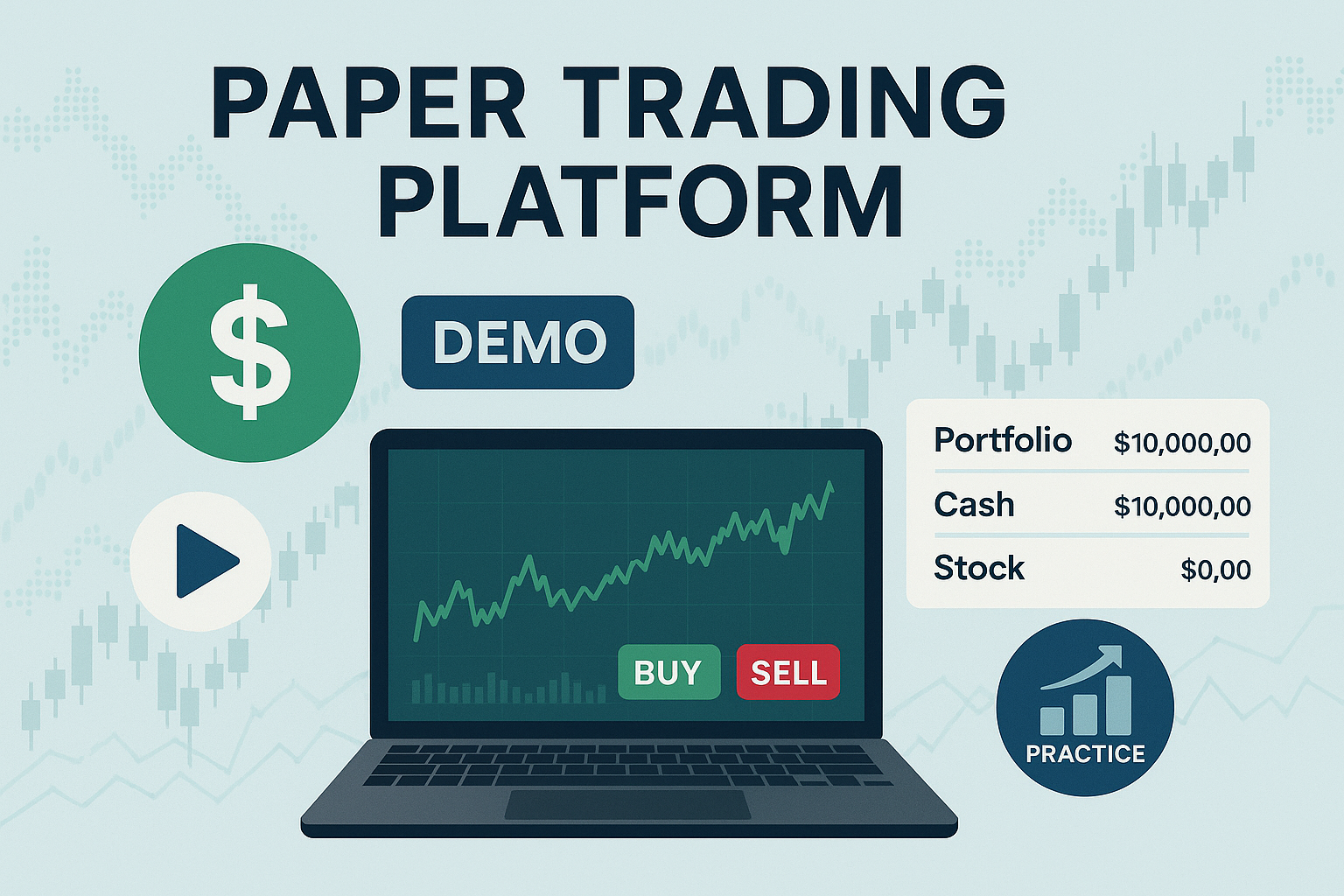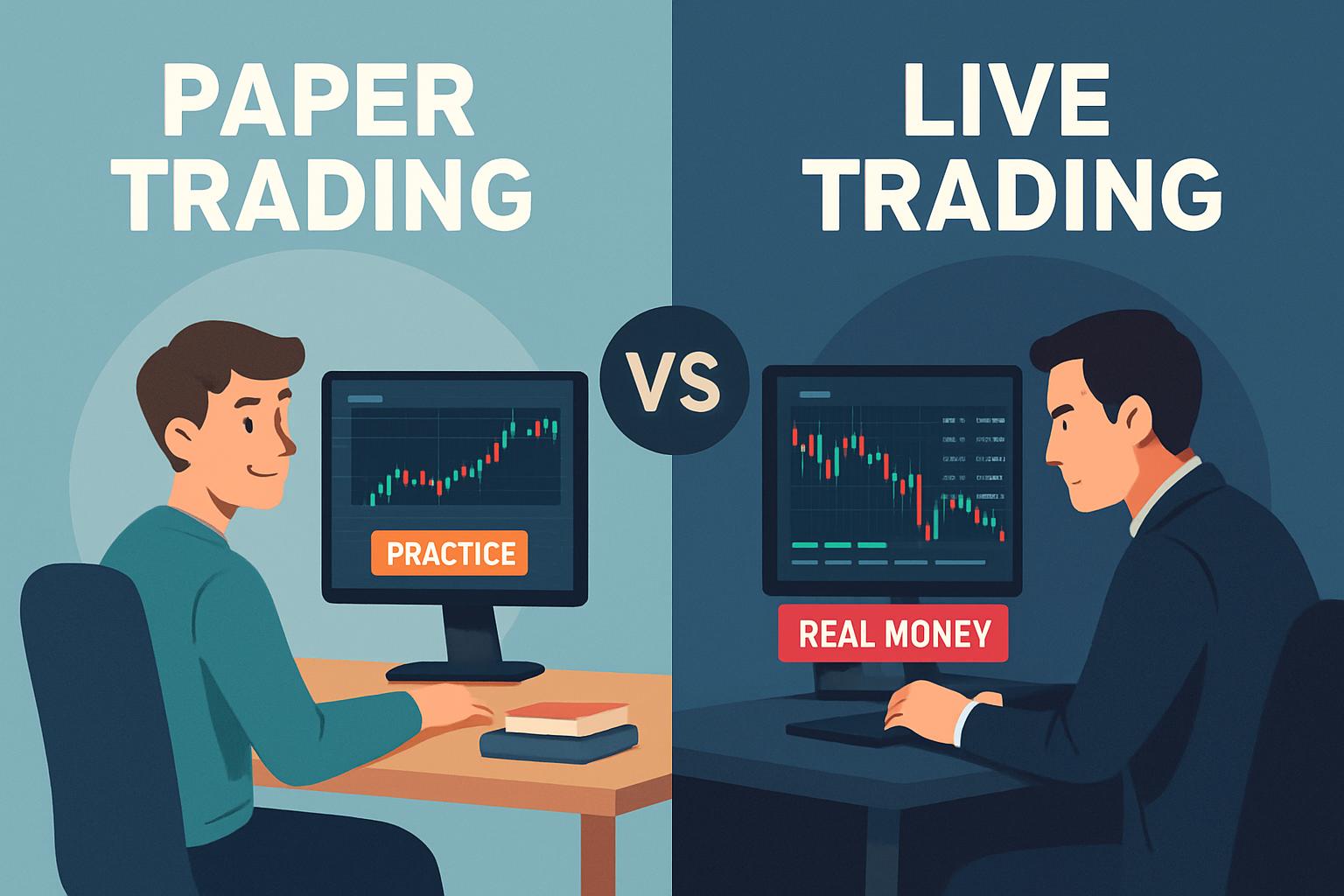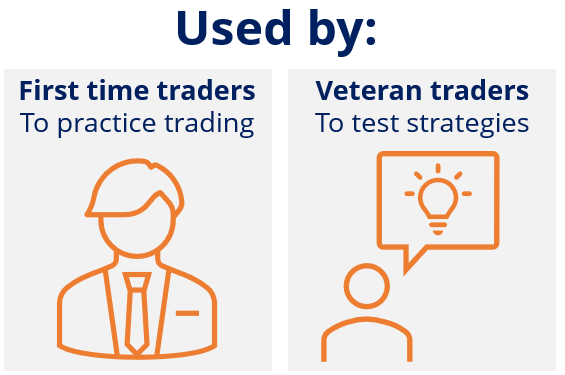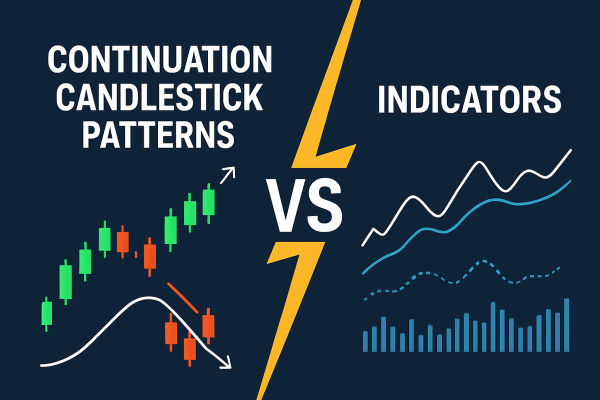Paper trading, also known as simulated or demo trading, allows you to trade real markets using virtual funds. The best part? You can practice and refine strategies risk-free.
It's vital to mention that even experienced traders often utilise paper trading for developing strategies and conducting forward tests.
While it's impossible to simulate emotional stakes or slippage fully, treating paper trading seriously can position you to transition into live trading with confidence. Here is a detailed guide for newcomers on how to paper trade like professionals before tackling the live market.
10-Step Process on How to Do Paper Trading Like a Pro

Step 1: Choose the Right Paper Trading Platform
Select a platform that mirrors the functionality of your intended live trading broker. Popular demo accounts include EBC Financial Group.
Ensure the platform provides real-time information, accommodates the assets you plan to trade, and allows you to track performance metrics.
Step 2: Set Up an Account and Customise Your Virtual Funds
After choosing your platform, open a paper trading account and set your starting balance to reflect realistic capital, E.g, $10,000. Creating realistic scenarios (instead of relying on platform defaults such as $1 million) improves discipline and mimics real stress.
Step 3: Learn the Platform Features
Spend time exploring order types, charting tools, news feeds, analytics dashboards, and order execution simulations. Familiarising yourself with the platform ensures seamless execution when moving to live trading.
Step 4: Create a Structured Trading Plan
Define your trading goals, strategies, instruments, risk appetite, and timeframes. Treat your paper account like a live one: plan entries, exits, stop-losses, and position sizes in advance.
Step 5: Practice Realistic Execution

Implement strategies as if you were trading live, ensuring full controls on position sizing and risk parameters. Avoid impulsive trades based on "play" money. Log every trade carefully, noting the reasoning, mindset, execution, and result.
Step 6: Track, Analyse, and Review Trades
Maintain a journal capturing entry points, trade rationale, emotional state, deviations from strategy, and performance. Periodically run analytics to calculate metrics like win rate, drawdowns, average return, and quality of entries. It helps identify strengths and weaknesses.
Step 7: Simulate Realistic Conditions
Remember that paper trading doesn't reflect emotional pressure, slippage, liquidity issues, commissions, or execution delays. To bridge the gap:
Use realistic capital limits
Stick to your trading rules
Manually deduct simulated costs for slippage or commission
Monitor setups for authenticity
Step 8: Forward Test and Avoid Overfitting
Paper trading aligns with forward testing, an essential step to validate backtested strategies using live data without real money. It ensures your strategy performs across market conditions.
Step 9: Transition to Live Trading Gradually
Start with small capital amounts, refine your execution, and monitor emotional reactions. Scaling gradually ensures you're not overwhelmed by real-market pressure.
Step 10: Continue Combining Paper and Live Practice
Even experienced traders return to paper trading when testing new strategies or platforms. Integrating simulation with live trading helps validate changes without risking capital.
Pros and Cons of Paper Trading
| Pros |
Cons |
| No financial risk — trade with virtual funds |
Doesn’t simulate real emotional pressure |
| Great for beginners to learn platforms and basics |
No real money = no slippage or execution delays |
| Allows safe strategy testing and practice |
May build overconfidence without real consequences |
| Useful for developing a consistent trading routine |
Market fills may not be realistic in fast-moving conditions |
| Helps build discipline and tracking habits |
Results may not translate exactly to live trading |
| Supports performance review and self-evaluation |
May delay transition to real-money trading for some traders |
Strategies to Maximise Paper Trading Effectiveness

Seasoned traders noted that managing risk effectively via paper trading sets you up for live success, meaning risk discipline learned in simulation will translate when money is real.
Therefore, to maximise effectiveness, here are some recommended strategies to implement:
Mimic live trading rules exactly
Avoid over-optimising based on past results
Use forward testing and out-of-sample validation (walk-forward analysis)
Track emotional triggers and decision points to build discipline
Rotate asset classes and timeframes for robustness
Frequently Asked Questions
1. Is Paper Trading Effective for Beginners?
Yes, paper trading is highly effective for beginners. It helps build familiarity with trading platforms, develop strategies, and gain market experience all in a zero-risk environment. However, one must treat it seriously to avoid developing bad habits.
2. Does Paper Trading Reflect Real Market Conditions?
Paper trading replicates actual market data but does not account for slippage, fees, or the emotional stress of risking real funds. For this reason, results may not always match live trading performance. Traders should account for these gaps.
3. When Should I Switch From Paper Trading to Live Trading?
You should consider switching to live trading once you've consistently followed your trading plan, maintained risk discipline, and produced positive results over several weeks or months in your paper account. Start small and scale up gradually.
Conclusion
In conclusion, mastering paper trading is a gradual, systematic process—one that emphasises realism, discipline, and reflection.
Remember: Paper trading isn't "just practice", it's the foundation for professional-grade trading preparedness.
Disclaimer: This material is for general information purposes only and is not intended as (and should not be considered to be) financial, investment or other advice on which reliance should be placed. No opinion given in the material constitutes a recommendation by EBC or the author that any particular investment, security, transaction or investment strategy is suitable for any specific person.









